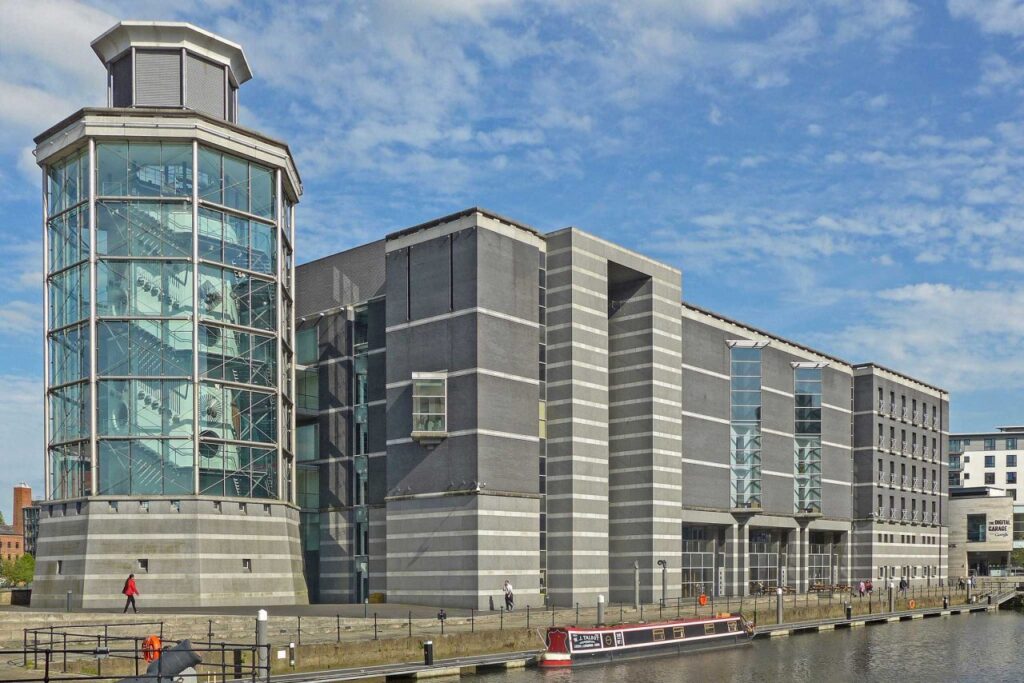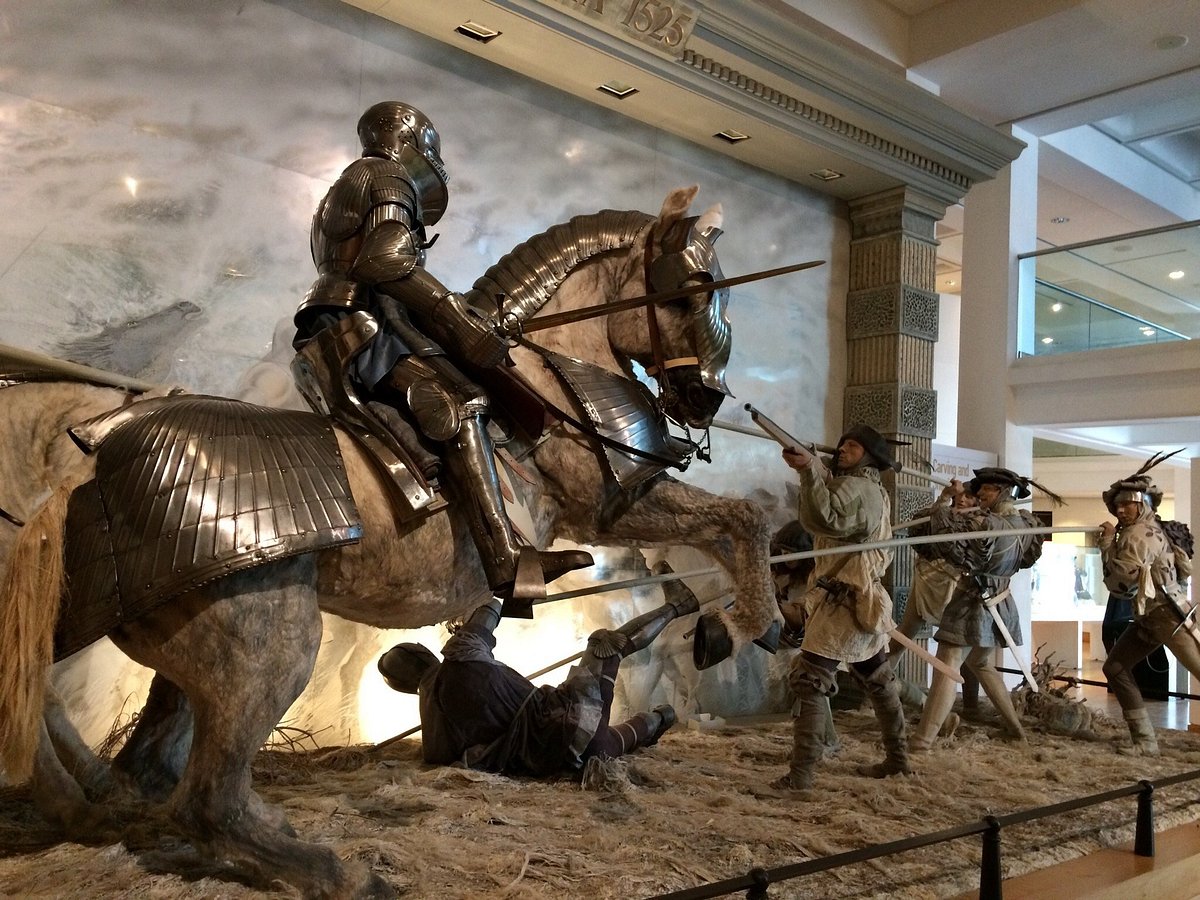The Royal Armouries Museum, located in Leeds, West Yorkshire, is the United Kingdom’s national museum of arms and armour. As one of the oldest museums in the world, its origins trace back to the Royal Armouries collection at the Tower of London, which dates to the 15th century. Today, the museum in Leeds is a vast, purpose-built facility housing over 75,000 objects, covering not only British military history but also arms and armour from across the globe and throughout the ages.
A visit to the Royal Armouries is more than just a walk through history—it is an immersive experience that blends medieval chivalry with modern conflict, ceremonial splendour with practical military technology, and cultural artifacts with cutting-edge interpretation.

History and Origins
The Royal Armouries is the United Kingdom’s oldest museum, originating from the Tower of London, which housed the national collection of arms, armour, and artillery used by the monarchy and armed forces. As early as the 15th century, visitors could view these collections in the Tower’s Line of Kings, an exhibit that showcased the armour of monarchs such as Henry VIII and Charles I.
For centuries, the collection remained housed at the Tower, supplemented by items from military campaigns, royal commissions, and gifts. By the late 20th century, the collection had outgrown the Tower’s limited space, and a new site was proposed. In 1996, the Royal Armouries Museum in Leeds opened to the public, offering a modern, interactive venue to house and display the ever-growing collection.
The Leeds site now serves as the headquarters of the Royal Armouries, with satellite sites remaining at the Tower of London (focusing on the institution’s historical roots) and Fort Nelson in Hampshire (specialising in artillery).
Architecture and Layout
Designed by architect Derek Walker and built at a cost of £42.5 million, the Royal Armouries Museum in Leeds is located in the Clarence Dock area, beside the River Aire. The building’s architecture is strikingly modern yet functional, with clean lines and expansive gallery spaces that cater to the display of large-scale artefacts like cannons, suits of armour, and even full-sized warhorses and elephants in armour.
The museum is laid out over five floors, with galleries organised thematically rather than chronologically. The core galleries are:
- War Gallery – Showcasing weapons and armour used in battle throughout history.
- Tournament Gallery – Focused on the art and culture of jousting and medieval tournaments.
- Self-Defence Gallery – Examining weapons used for personal protection and duelling.
- Hunting Gallery – Covering the equipment used in hunting, both as a pastime and necessity.
- Oriental Gallery – A breathtaking display of arms and armour from India, Japan, the Middle East, and other parts of Asia.
A dedicated Hall of Steel, a towering atrium at the heart of the museum, houses a dramatic spiral display of over 2,500 weapons including swords, spears, muskets, and shields—an iconic visual symbol of the museum.
Highlights of the Collection
The Royal Armouries’ holdings span over 3,000 years, encompassing everything from Bronze Age weapons to contemporary military technology. Some highlights include:
Henry VIII’s Tournament Armour
One of the most famous pieces in the collection is the armour made for King Henry VIII for the 1520 Field of the Cloth of Gold tournament in France. This lavishly decorated armour combines artistic craftsmanship with brutal functionality, reflecting the king’s political ambitions and warrior persona.
Elephant Armour
An astonishing and rare example of complete elephant armour from India, dating back to the 17th century, this suit consists of over 5,000 metal plates. It demonstrates the scale and ceremonial grandeur of Indian military pageantry.
Samurai Armour and Weapons
The Oriental Gallery features an impressive array of Japanese samurai armour, helmets, and swords, illustrating the sophisticated martial culture of feudal Japan. These items are not only functional but also beautifully adorned with lacquer, silk, and gold leaf.
Modern Weapons
The museum doesn’t stop at the past—it includes exhibits on modern warfare, including items from the World Wars, Cold War, and 21st-century conflicts. Weapons such as AK-47s, machine guns, and body armour show the evolution of military technology.
Artillery Collection
At Fort Nelson, part of the Royal Armouries family of museums, visitors can view large-scale artillery pieces, including siege weapons, cannons, and even Cold War missile systems.
Interactive and Educational Features
The Royal Armouries Museum isn’t just a static display of artefacts—it is designed to be highly interactive and educational, catering to families, school groups, and history enthusiasts alike.
Live Demonstrations
One of the most popular aspects of the museum is its regular live combat demonstrations and jousting tournaments, held in the outdoor arena. These events bring history to life, showcasing the techniques, discipline, and drama of historical martial arts.
Handling Sessions
Visitors can attend object handling sessions, where trained staff allow people to touch and examine replica weapons and armour, helping them understand the materials, weight, and functionality of historical equipment.
Digital Displays and Audio Guides
Many exhibits feature multimedia presentations, videos, and interactive kiosks, offering historical context, animations, and insights into the lives of warriors, soldiers, and weapon-makers.
Exhibitions and Special Events
The Royal Armouries hosts rotating exhibitions throughout the year, covering everything from medieval siege warfare to modern military ethics. Past exhibitions have explored topics such as the First World War trench experience, the history of duelling, and even the iconography of fantasy weapons in pop culture and cinema.
Events such as Medieval Weekends, Viking re-enactments, and Living History Days attract thousands of visitors annually, offering immersive ways to engage with the past.
Research and Conservation
The museum is also a hub of academic research, conservation, and publishing. It supports:
- Scholarly research into arms and armour history
- Conservation projects to preserve delicate artefacts
- Publications, including catalogues, monographs, and journals
- Collaboration with universities and international institutions
This ensures that the Royal Armouries remains not only a repository of artefacts but a living institution advancing the study of military history.
Visitor Information
- Admission: Free (special events may require ticketing)
- Location: Armouries Drive, Leeds, LS10 1LT
- Opening Hours: Generally open daily (check for seasonal hours and closures)
- Facilities: Café, shop, accessible toilets, and baby changing areas
The museum is wheelchair accessible, with lifts to all floors. It also offers guided tours, family trails, and activities designed for children of all ages.
Cultural Significance and Legacy
The Royal Armouries Museum plays a crucial role in preserving and interpreting the material culture of conflict, reminding visitors of the human stories behind the objects. It offers a unique perspective on how societies have armed themselves, defended their ideals, and celebrated martial values through time.
Moreover, by including diverse cultural items—from samurai swords to Zulu shields—it provides a global context for arms and armour, encouraging visitors to see warfare not only as a matter of technology and tactics, but also of tradition, ceremony, and identity.
Conclusion
The Royal Armouries Museum in Leeds is more than just a collection of old weapons—it is a vibrant, engaging, and dynamic space that invites visitors to explore the full breadth of human history through the lens of conflict and defence. Whether you are drawn by medieval jousts, fascinated by samurai warriors, or intrigued by the ethics of modern warfare, the museum offers a captivating and educational experience.
For history buffs, students, families, and the curious alike, the Royal Armouries Museum remains one of the UK’s most fascinating and enriching cultural destinations.

